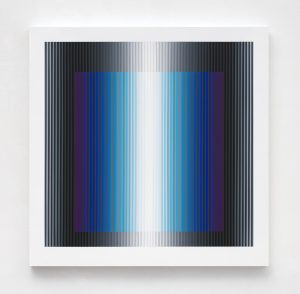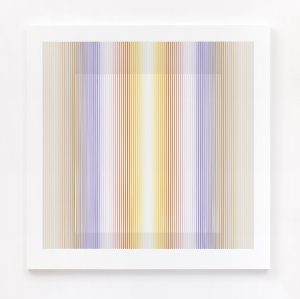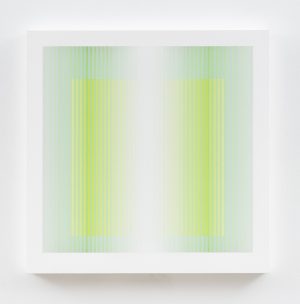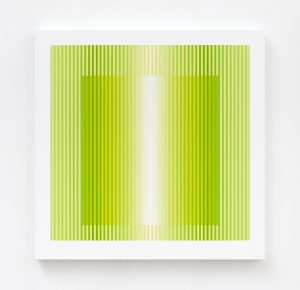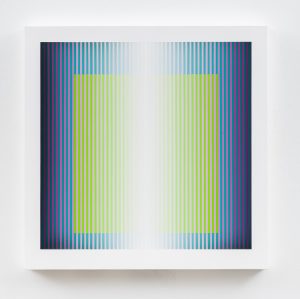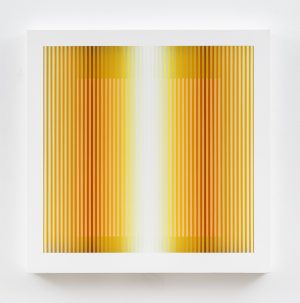
István HALMI-HORVÁTH
Hommage á Albers 220404
- Year(s)
- 2022
- Technique
- acryl, canvas on wood
- Size
- 80x80x5 cm
Artist's introduction
"The number of stories and worlds I imagine depends only on how much time I have to contemplate." The depths we experience of the phenomena we look at depends only on the attention we pay to them. Several generations of abstract-geometric artists have been fascinated by this theme, and – according to art historian Viola Farkas – István Halmi-Horváth takes this multi-generational idea further. The artist, who followed in the footsteps of Lajos Kassák, László Moholy-Nagy, Imre Bak and Tamás Hencze, graduated as a painter from the Hungarian University of Fine Arts in 2002. His solo exhibitions have been shown in several venues in Budapest and in other cities of the country, such as the László Vass Collection in Veszprém, the Esterházy Palace in Győr, the Karithy Salon or the Viltin Gallery in Budapest. in 2012 he was a special prize winner of the Biennale of Tableau Painting, in 2013 also a special prize winner of the Balaton Biennale, in 2000 he was a recipient of the Bertalan Székely Scholarship, and the Carmen Würth Prize. Viola Farkas explains the art of István Halmi-Horváth in platonic terms: "Painters usually turn to geometric forms because this is how they can create the most perfect image of the structure of the world. These images presuppose the absolute behind phenomena, the eternity of the idea, that there are eternal values which exist in themselves because concepts remain identical with themselves, and that our imperfect material world is only a reflection of the world of eternal and unchanging ideas." The abstract, geometric repetitive forms, even spanning across series, seem to tease with stubborn curiosity the layers of reality they have lifted. The seemingly never-ending variation to find the perfect composition and use of color, which gives the images a sometimes dynamically playful, sometimes serious and static feel, is the result of a simple but highly complex creative process. István Halmi-Horváth often spends a long time searching for the defining form of a series, and on this he builds a palette of colors, some of which we have never even heard of. In the compositions, the immateriality, timelessness, and seriousness of the absolute are replaced by lively, animated figures in constant motion, which sometimes even slip out of the frame in their unbridledness. The bathing in the bringing forth of the thousand faces of infinity is a display of the world's most serious subject with exuberant lightness. Délia Vékony
More artworks in the artist's collection »


